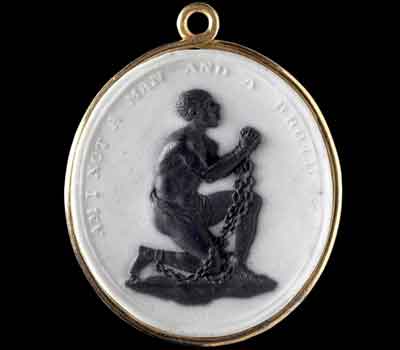Taking the knee, and how BLM became synonymous with Communism
Government ministers are keen to stress distinction between taking the knee for highlighting racism and doing so in the interests of Black Lives Matter

As the Euro 2020 games are set to kick off, the debate around taking the knee continues to dominate the national conversation – with some government ministers defending the act in the name of addressing “racism”, but criticising it when done in the name of Black Lives Matter.
But how did Black Lives Matter, a global movement centred on creating in world in which black people’s lives and futures count as much as anyone else’s, become, for some, apparently synonymous with Communism?
Speaking on BBC’s Question Time on Thursday evening, Education minister Gillian Keegan said that “what’s happening here is this in itself is actually being more divisive, it’s creating new divisions.”
“There are some Conservative MPs (that) are very much against it, why? Because Black Lives Matter stand for things that they don’t stand for. It’s really about defunding the police and the overthrow of capitalism, which is, you know, Black Lives Matter the actual political organisation,” she said.
And on Friday, vaccines minister Nadhim Zahawi said he and the government supported taking the knee when the symbolism is linked to “reminding the world of how painful it is to be subjected to the racism that Marcus Rashford has been subjected to, whether on social media or elsewhere, I absolutely back.”
“If you then extrapolate to a Black Lives Matter movement that has a political agenda ... that’s a different place, that’s my point – which is why I think we just have to differentiate and rightly back our team.”
But where has this idea come from?
What are the aims of the Black Lives Matter organisations?
Plural, but with one key focus – ending structural inequalities. There are two leading rallying groups under this banner: BLM US and BLM UK, and yet more factions across the globe after that.
On the US group’s website, it states that its mission is to “eradicate white supremacy and build local power to intervene in violence inflicted on Black communities by the state and vigilantes.”
Meanwhile, Black Lives Matter UK’s branch says: “We believe we can create a world without systemic violence and exploitation, where all can live full and free lives. This is what we believe liberation is.”
The collective also calls to “defund the police and invest in communities” which means to divest funds from police forces and reallocating them to non-policing measures geared towards securing public safety; critics of BLM peddle the false narrative that the slogan means to abolish the police altogether.
Some 20 per cent of Britons oppose the BLM movement, according to recent data.
A now defunct fundraiser page belonging to the UK branch referred to the overthrow of capitalism.
The ‘Communist influence’?
There’s a long history of anti-racism movements being labelled as subversive Communist campaigns by critics, either through a lack of understanding, or through an apparent aim to discredit the causes altogether.
On both sides of the Atlantic, this trope has been witnessed over decades, whether through the targeting of Dr Martin Luther King by FBI director J Edgar Hoover and the US government in the 1960s, to the persecution of Black British activists by the authorities in the 1970s.
Hoover often denounced the “Communist influence” within the “Negro movement” while targeting various equalities activists and placing them under surveillance.
And in July 1970, the Foreign Office sent a report on the ‘Black Power Movement’ in the UK to the Immigration Department at the Home Office. It was compiled by the Information Research Department (IRD), a covert propaganda unit set up during the Cold War to tackle ‘communist influences’.
While there may well have been socialists within any civil rights group, during the Cold War it was generally not uncommon for anti-communist politicians to capitalise on the political tensions by linking civil rights campaigns to communism.
Miriyam Aouragh, a lecturer at the London-based Westminster School of Media and Communication, told PolitiFact: “I am fairly convinced these are mostly attempts to smear anti-racist activists.
“I think in some media, ‘Marxist’ is dog-whistle for something horrible, like ‘Nazi’, and thus enables to delegitimize/dehumanize them.”
In a video from 2015 which resurfaced last year, Black Lives Matter US co-founder Patrisse Cullors had said that she and her fellow organisers are “trained Marxists”.
“We are trained Marxists. We are super-versed on, sort of, ideological theories. And I think that what we really tried to do is build a movement that could be utilized by many, many Black folk,” she told Jared Ball of the Real News Network.
Marxism is essentially underpinned by the principle of a classless society where the rich and the poor are equal.
The history of taking the knee
The act itself predates the Black Lives Matter organisation, which began life in 2013 and was reignited after the death of George Floyd at the hands of a white police officer in May 2020.
For many years, anti-racism activists have long-associated kneeling with the concept of protest against discrimination and as a means of asserting one’s rights.

Notably, US civil rights figure Martin Luther King Jr took the knee during a march in Selma, Alabama, in 1965.
He made the gesture while leading a prayer outside the Dallas County Alabama Courthouse, along with several other equalities marchers, after the group of about 250 was arrested for parading without a permit.
Moreover, there’s a renowned 18th-century image featured on a medallion, by English potter and abolitionist Josiah Wedgwood of an enslaved Black man kneeling, with the inscription “Am I Not a Man and a Brother”.
The illustration was widely reproduced and the phrase became a rallying call for European slavery abolitionists.

In 2016, former NFL quarterback Colin Kaepernick embraced the symbol once again, taking the knee after refusing to stand during the pre-game national anthem because of how minorities are treated across the US.
“I am not going to stand up to show pride in a flag for a country that oppresses Black people and people of colour,” Kaepernick said at the time.
It soon trickled through to other sports, and continues to play a part in the global discussion around racism.
Join our commenting forum
Join thought-provoking conversations, follow other Independent readers and see their replies
Comments
Bookmark popover
Removed from bookmarks